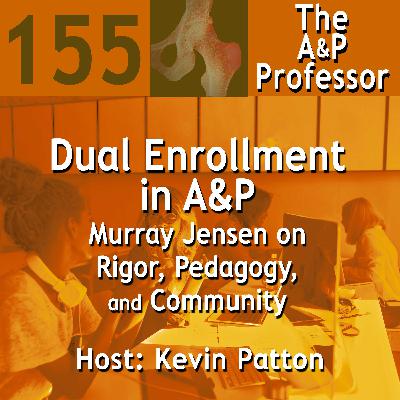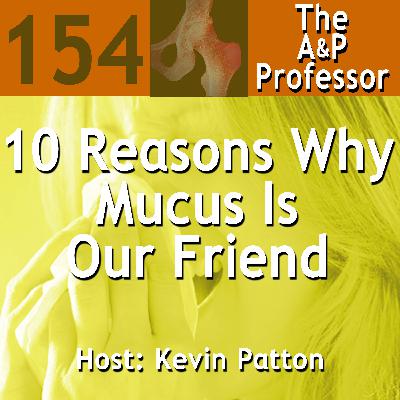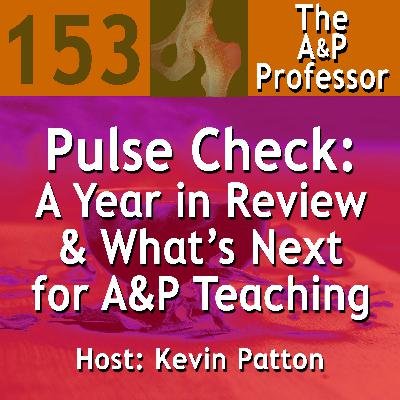Fascinating Fascia: Kate Oland Galligan Unravels the Ties That Bind | TAPP 152
Description
Episode 152 centers on a lively conversation between Kevin and Dr. Kate Oland Galligan as they trace her path from a curious undergrad to a passionate fascia educator and clinician. The duo challenges old perceptions of fascia, recounting stories from early lab experiences where fascia was simply “ripped out,” and contrasting them with new insights on its dynamic, interconnected nature. They reveal how subtle fascial restrictions can cause significant clinical symptoms—linking pelvic imbalances to jaw pain—and explore the emerging field of mind-body connections in fascial therapy.
0:00:00 | Introduction
0:00:55 | Introducing Kate Introducing Fascia
0:17:06 | Fascia Mini Lesson *
0:20:00 | Rip That Fascia Out!
0:37:14 | Get Ready for Annual Debriefing
0:39:00 | The Hip Bone is Connected to the Jaw Bone
1:03:08 | We’re on Substack! *
1:06:13 | Mind-Body Connections
1:21:45 | Staying Connected
* Breaks
★ If you cannot see or activate the audio player, go to: theAPprofessor.org/podcast-episode-152.html
🏅 Apply for your credential (badge/certificate) for listening to this episode: theAPprofessor.org/podcast-episode-152.html/#badge
⭐⭐⭐⭐ Please rate & review this podcast so that others can decide whether to give it a try: RateThisPodcast.com/theAPprofessor
❓ Please take the anonymous survey: theAPprofessor.org/survey
☝️ Questions & Feedback: 1-833-LION-DEN (1-833-546-6336)
✔️ Follow The A&P Professor on Twitter, Facebook, Blogger, Substack, Tumblr, or Instagram! @theAPprofessor
📰 Get the once-or-twice-weekly TAPP Science & Education Updates theAPprofessor.org/updates
Understanding fascia requires abandoning the traditional anatomical view of separate structures and embracing a model of interconnected, living tissues. (Jean-Claude Guimberteau)
Introducing Kate Introducing Fascia
16 minutes
In this segment, Kevin reconnects with Dr. Kate Oland Galligan, a former student who has since become a passionate fascia educator and clinician. They reminisce about their time studying physiology together, sharing a nostalgic moment about the infamous Krebs cycle. Kate shares her professional journey from graduate school to clinical practice, detailing how she discovered her deep interest in fascia. As she explains, her dual role as both an instructor and practitioner has given her unique insights into why fascia deserves more attention in undergraduate education. Their conversation sets the foundation for an in-depth exploration of fascia’s overlooked importance in both teaching and clinical applications.
Fascia Mini Lesson
3 minutes
In this short break, Kevin introduces lionden.com, a website he created to offer students supplemental resources for learning A&P. He highlights the value of his “mini lessons,” which provide quick, digestible overviews of complex topics like fascia. These digital outlines help students reinforce their understanding beyond textbooks, offering interactive elements and structured learning aids. He encourages listeners to explore the site for additional learning tools, emphasizing the importance of creative, digital-friendly resources in modern anatomy and physiology education.
Rip That Fascia Out!
17 minutes
This segment takes a deep dive into how fascia has traditionally been misunderstood, especially in dissection labs where it was often “ripped out” to expose muscles, minimizing its true significance. Kate recalls her early anatomy lab experiences and how her perspective on fascia evolved once she began working in clinical practice. They discuss groundbreaking research showing how living fascia is dynamic and responsive, unlike the dehydrated tissue seen in cadavers. The conversation delves into the clinical impact of fascial restrictions, revealing how small, seemingly minor adhesions can generate significant pressure and pain throughout the body. These insights challenge the old paradigm that fascia is merely a passive, structural tissue.
Get Ready for Annual Debriefing
3.5 minutes
In this "brain break," Kevin teases the upcoming annual debriefing episode, a tradition where he reflects on past predictions about A&P teaching and makes new ones for the coming year. He invites listeners to contribute their own thoughts, concerns, and expectations for the future of anatomy and physiology education. This segment reinforces the podcast’s interactive and community-driven nature, encouraging engagement and discussion among educators.
The Hip Bone is Connected to the Jaw Bone
12 minutes
During this segment, Kevin and Kate explore the surprising connections within the fascial system, such as how pelvic imbalances can influence jaw function and why scar tissue in one area can affect movement and pain in another. Kate explains her approach to treating fascial restrictions, emphasizing the importance of sustained holds, sometimes lasting several minutes, to allow the tissue to release and rehydrate. Their discussion highlights how posture, embryological development, and past injuries all interact through fascia, reinforcing the idea that the body is not a collection of separate parts but rather an interconnected whole.
We're on Substack!
3 minutes
During this break, Kevin shares exciting news about his weekly science and teaching updates now being available on Substack. He explains how this platform blends newsletters with social media-style engagement, allowing educators to stay informed about the latest A&P breakthroughs and pedagogical trends. He encourages listeners to explore Substack as a way to connect with a broader community of professionals who are passionate about anatomy and physiology education.
Mind-Body Connections
15.5 minutes
This segment shifts the discussion toward the emotional aspects of fascial therapy. Kate delves into the idea that past trauma—both physical and emotional—can become “stored” in the fascia, sometimes manifesting as pain or tension. She shares experiences from her clinical practice where patients have had unexpected emotional responses during treatment, suggesting a deeper link between fascia and the nervous system. Kevin and Kate discuss ongoing research into tissue memory, acknowledging that while much remains to be studied, the connections between fascia, emotional well-being, and physiological function are becoming increasingly evident. This conversation bridges science and clinical practice, opening the door for more integrative approaches to healing.
Note: Kate's new search engine to find healing where you are right now—Thrive Anywhere—will be available in June 2025. Stay tuned to The A&P Professor for more news on this.
Links
★ Books:
The Body Keeps the Score: Brain, Mind, and Body in the Healing of Trauma (Bessel van der Kolk) geni.us/FvQBXS
🏅 Claim your credential for reading this book. AandP.info/zoh
Architecture of Human Living Fascia: The Extracellular Matrix and Cells Revealed Through Endoscopy (Jean-Claude Guimberteau, Colin Armstrong) geni.us/oj0v2
<p style="paddi
























